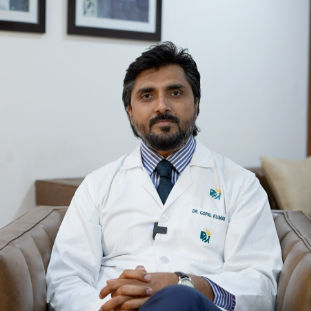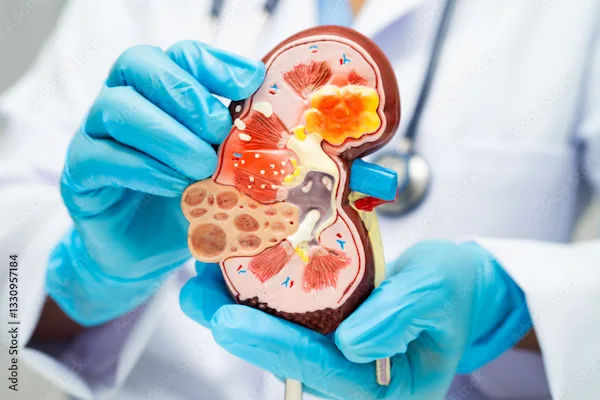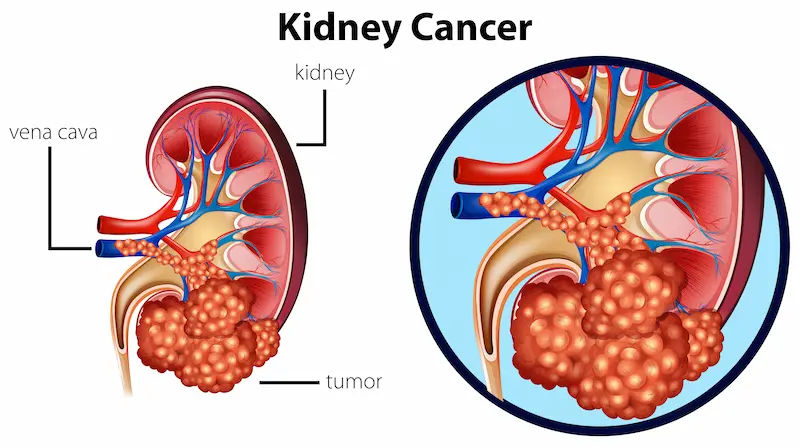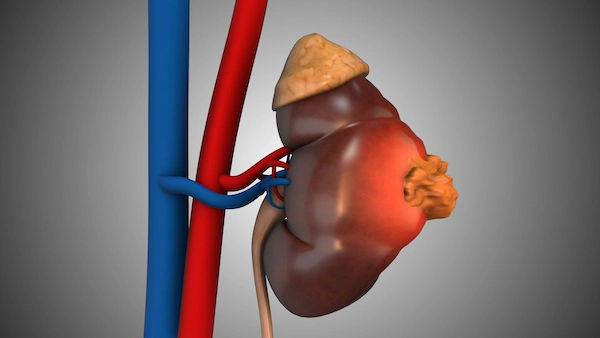Your Guide to Robotic Partial Nephrectomy: Saving Your Kidney
Know about robotic partial nephrectomy, what it is, what to expect in surgery and lifechanging benefits from it and more.

Written by Dr. Vasanthasree Nair
Reviewed by Dr. Rohinipriyanka Pondugula MBBS
Last updated on 23rd Sep, 2025

Introduction
Facing a kidney tumour diagnosis can be overwhelming. In the past, the standard solution often meant removing the entire kidney—a major surgery with lifelong implications. Today, medical advancements prioritise a "each kidney counts" philosophy. Enter robotic partial nephrectomy (RPN), a groundbreaking minimally invasive procedure that meticulously removes the tumour while preserving the healthy, functioning part of your kidney. This approach is revolutionising kidney cancer care, focusing on your long-term health and quality of life. This guide will walk you through everything you need to know about RPN.
What is a Robotic Partial Nephrectomy?
A robotic partial nephrectomy is a highly precise, minimally invasive surgical procedure to remove a kidney tumour while leaving the rest of the healthy kidney intact. Instead of a large open incision, the surgeon operates through a few small keyhole incisions using a state-of-the-art robotic system, most commonly the da Vinci Surgical System. This system translates the surgeon’s hand movements into smaller, more precise movements of tiny instruments inside your body.
Consult Oncology Surgeon for Personalised Advice
Nephron-Sparing Surgery: The "Each Kidney Counts" Philosophy
The core principle behind a partial nephrectomy is "nephron-sparing surgery." Nephrons are the microscopic filtering units of your kidney. The goal is to save as many nephrons as possible. Why? Because preserving kidney tissue is directly linked to better long-term health outcomes. It lowers the risk of developing chronic kidney disease (CKD), which is associated with high blood pressure, cardiovascular problems, and the potential need for dialysis. This philosophy truly embodies the idea that each kidney counts, and even saving a portion of a kidney is far superior to losing the whole organ if possible.
How Robotic Surgery Revolutionized Kidney Tumor Removal
Before robotics, partial nephrectomies were performed as open surgeries, requiring a large flank incision, significant muscle cutting, a longer hospital stay, and a painful recovery. Laparoscopic techniques improved this, but were technically challenging for the complex reconstruction of the kidney. Robotic technology changed the game. The system provides surgeons with a magnified 3D high-definition view of the surgical field and wristed instruments that bend and rotate far greater than the human hand. This enhanced dexterity and vision allow for meticulous dissection of the tumour and precise suturing of the kidney, making nephron-sparing surgery safer, more effective, and accessible to more patients.
Are You a Candidate for Robotic Kidney Surgery?
Not every kidney tumour is suitable for a partial nephrectomy. The decision is made by a multidisciplinary team based on the tumour's characteristics, your overall health, and kidney function.
Ideal Conditions for a Partial Nephrectomy
You are likely an excellent candidate for a robotic-assisted partial nephrectomy if:
Your kidney tumour is relatively small (typically under 4 cm, though larger tumours in suitable locations can be considered).
The tumour is located in a position that allows for safe removal without damaging critical structures within the kidney.
You have a normally functioning opposite kidney, or you need to preserve function due to pre-existing kidney disease, diabetes, or hypertension.
You are in good general health to undergo anesthesia.
When is Full Kidney Removal (Radical Nephrectomy) Necessary?
In some cases, a radical nephrectomy (full removal) remains the best option. This may be recommended if:
The tumour is very large or is located in an area that makes partial removal too risky.
The tumour involves critical blood vessels of the kidney.
There are multiple tumours in one kidney.
The patient's overall health makes a longer, more complex partial nephrectomy less safe.
What to Expect: The Robotic Partial Nephrectomy Procedure
Understanding the process can help alleviate anxiety and prepare you for the journey.
Preoperative Preparation and Tests
In the weeks before surgery, you will undergo several tests to ensure you are ready. This includes blood tests (to check kidney function and overall health), imaging scans (like a CT or MRI to map the tumour in 3D), and a cardiac evaluation if needed. Your surgeon will provide specific instructions regarding medications, fasting, and bowel preparation.
Step-by-Step: A Look Inside the Operating Room
1. Anaesthesia: You will be placed under general anaesthesia.
2. Access: The surgeon makes 4-5 small incisions (about 1 cm each) in your abdomen.
3. Port Placement: Ports are inserted to accommodate the robotic arms and a camera.
4. Visualisation: The abdomen is inflated with gas to create space to work.
5. Robotic Docking: The da Vinci system is wheeled over and the arms are attached to the ports. The surgeon controls the system from a console in the room.
6. Tumour Removal: The surgeon carefully dissects the tumour away from the healthy kidney tissue.
7. Reconstruction: The remaining kidney is sutured closed to control bleeding and prevent urine leakage.
8. Extraction: The tumour is placed in a bag and removed through one of the small incisions.
9. Closure: The instruments are removed, and the tiny incisions are closed with sutures or glue.
The Role of the Surgical Team and Technology
It's crucial to remember that the robot does not operate on its own. The surgeon is in complete control 100% of the time. A full team of trained assistants and nurses at the operating table works in tandem with the surgeon at the console to ensure your safety and the procedure's success. The technology is a tool that extends the surgeon's capabilities.
The Life-Changing Benefits of Choosing Robotic Surgery
The advantages of RPN over traditional open surgery are significant and impactful for your recovery and long-term health.
Preserving Long-Term Kidney Function (Why It Matters)
This is the most critical benefit. By saving healthy kidney tissue, you maintain your body's natural filtration system. Studies show that patients who undergo partial versus radical nephrectomy have a significantly lower risk of developing severe chronic kidney disease down the road. This is a crucial benefit of kidney-sparing surgery for overall longevity and health.
Faster Recovery and Less Pain Compared to Open Surgery
Because the incisions are so small, patients experience far less pain after surgery. This leads to:
Shorter hospital stays (often 1-2 nights vs. 5-7 for open surgery).
A quicker return to normal daily activities.
Reduced need for strong opioid pain medications.
Superior Precision and Minimal Scarring
The robotic system’s enhanced vision and precision allow for extremely accurate tumour removal with clear margins while minimising damage to surrounding tissue. This precision also results in minimal blood loss during surgery. Cosmetically, you are left with a few small scars instead of one large one.
Navigating Your Recovery After Surgery
Knowing what to expect after surgery can help you plan and recover with confidence.
The First Few Days: Hospital Stay and Pain Management
You will wake up with a catheter and an IV. You will be encouraged to walk the same day or the next to prevent blood clots. Pain is managed effectively with medication. Most patients are discharged within a few days once they are comfortable, can eat, and are mobile.
Returning Home: Activity Guidelines and Diet
At home, you should avoid heavy lifting (nothing over 10-15 lbs) and strenuous activities for 4-6 weeks. Walking is encouraged. You may experience some fatigue—this is normal. Stay hydrated and eat a balanced diet to promote healing. If you experience fever, severe pain, or redness around your incisions, it's important to consult a doctor immediately. Platforms like Apollo24|7 allow you to have an online consultation quickly to address any post-operative concerns.
Long-Term Follow-up Care and Monitoring
Follow-up is essential. This includes periodic imaging (like CT scans or ultrasounds) and blood tests to monitor your kidney function and ensure there is no recurrence of cancer. Apollo24|7 offers convenient home collection for tests like serum creatinine and eGFR, which are key markers for monitoring your kidney health after surgery.
Risks and Considerations of Robotic Partial Nephrectomy
While highly safe, all surgeries carry risks. Potential risks of RPN include:
Bleeding (may rarely require a blood transfusion).
Infection.
Urine leakage from the repaired kidney (most resolve on their own).
Damage to surrounding organs (very rare).
Incomplete tumour removal, requiring further treatment.
Conversion to an open surgery if intraoperative complications arise.
Your surgeon will discuss these risks with you in detail based on your specific situation.
Conclusion:
A diagnosis of a kidney tumour no longer automatically means losing an entire organ. Robotic partial nephrectomy represents a triumph of modern medicine, aligning technological innovation with the core "each kidney counts" principle of preserving your body's natural function. This procedure offers a powerful combination of effective cancer control and improved quality of life, with a faster recovery and better long-term health outcomes. If you or a loved one is facing kidney surgery, be empowered to ask your urologist about whether you are a candidate for this kidney-sparing approach. The right information is the first step toward the best possible care.
Consult Oncology Surgeon for Personalised Advice
Consult Oncology Surgeon for Personalised Advice

Dr. Sanchayan Mandal
Medical Oncologist
17 Years • MBBS, DrNB( MEDICAL ONCOLOGY), DNB (RADIOTHERAPY),ECMO. PDCR. ASCO
Kolkata
MCR SUPER SPECIALITY POLY CLINIC & PATHOLOGY, Kolkata

Dr. Rupam Manna
Radiation Specialist Oncologist
4 Years • MBBS MD(RADIO THERAPY)
Barasat
Diab-Eat-Ease, Barasat

Dr.sanchayan Mandal
Medical Oncologist
17 Years • MBBS, DrNB( MEDICAL ONCOLOGY), DNB (RADIOTHERAPY),ECMO. PDCR. ASCO
Kolkata
Dr. Sanchayan Mandal Oncology Clinic, Kolkata

Dr. Gopal Kumar
Head, Neck and Thyroid Cancer Surgeon
15 Years • MBBS, MS , FARHNS ( Seoul, South Korea ), FGOLF ( MSKCC, New York )
Delhi
Apollo Hospitals Indraprastha, Delhi
(25+ Patients)

Dr Gowshikk Rajkumar
Oncologist
10 Years • MBBS, DMRT, DNB in Radiation oncology
Bengaluru
Apollo Clinic, JP nagar, Bengaluru

.webp)


